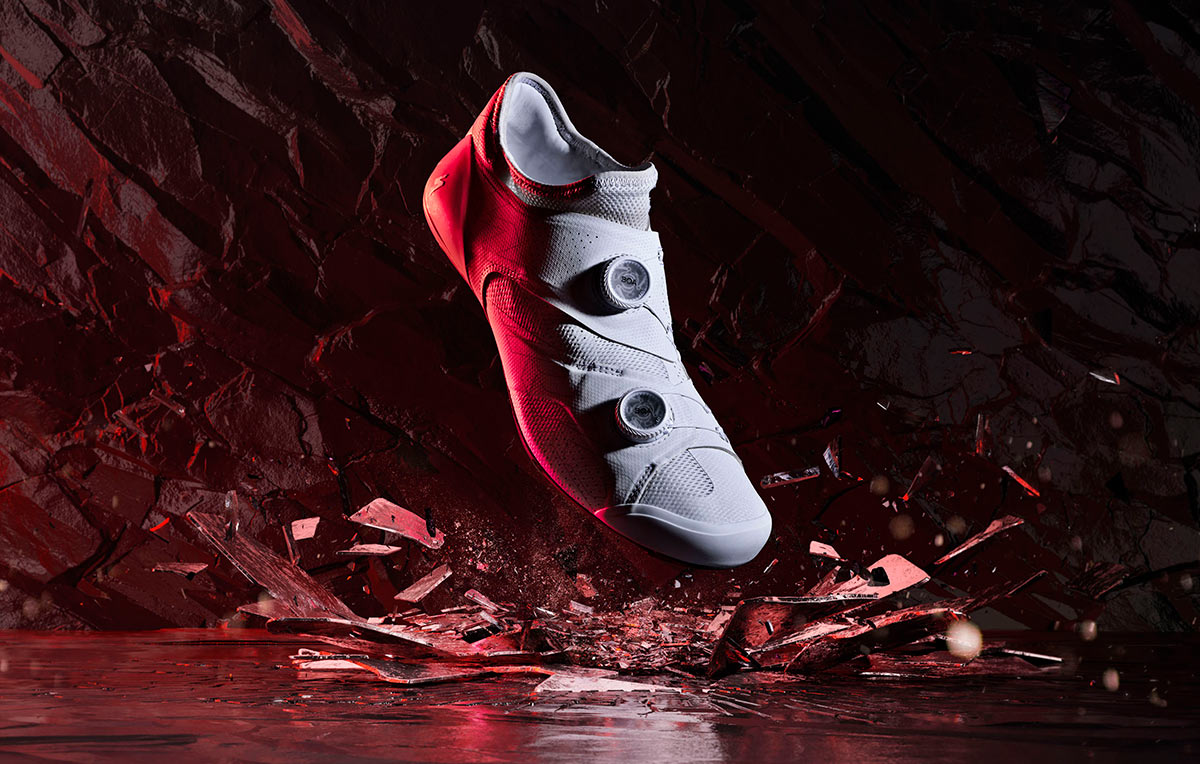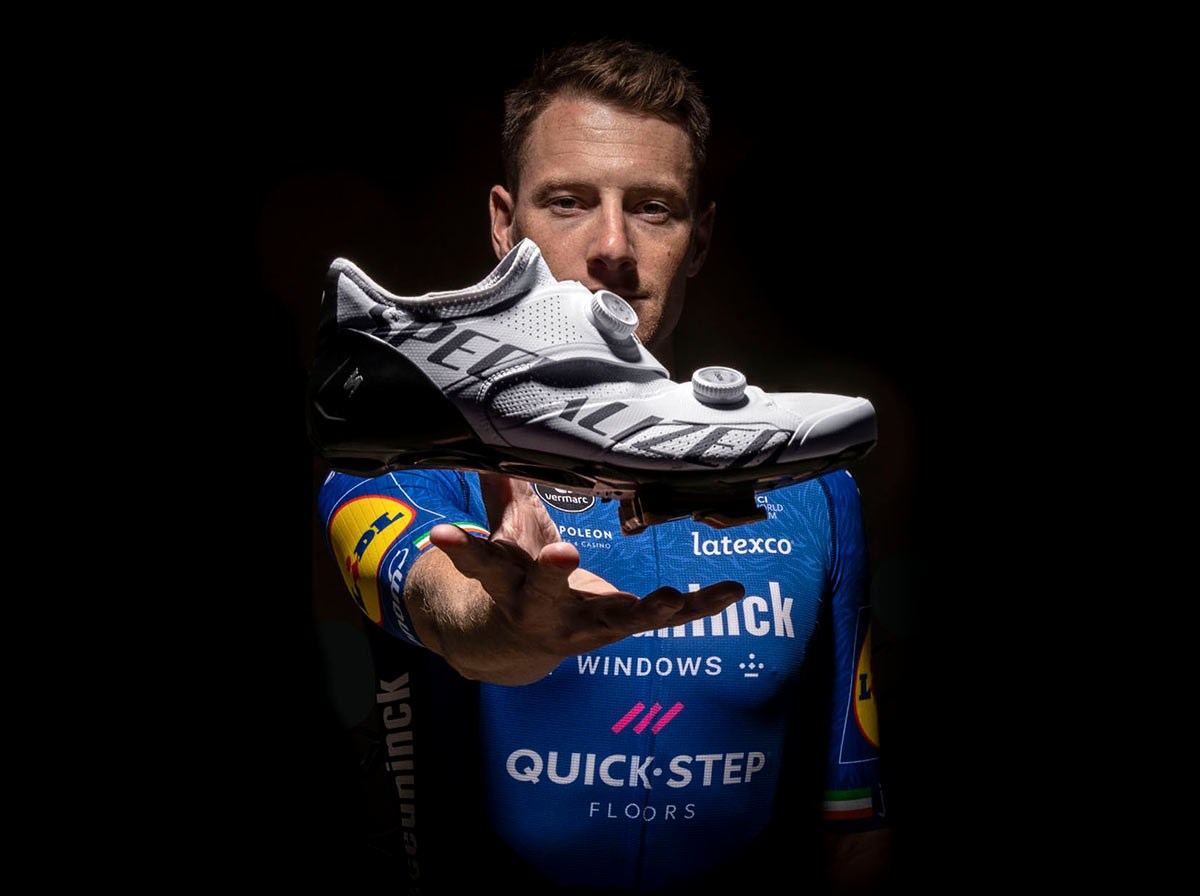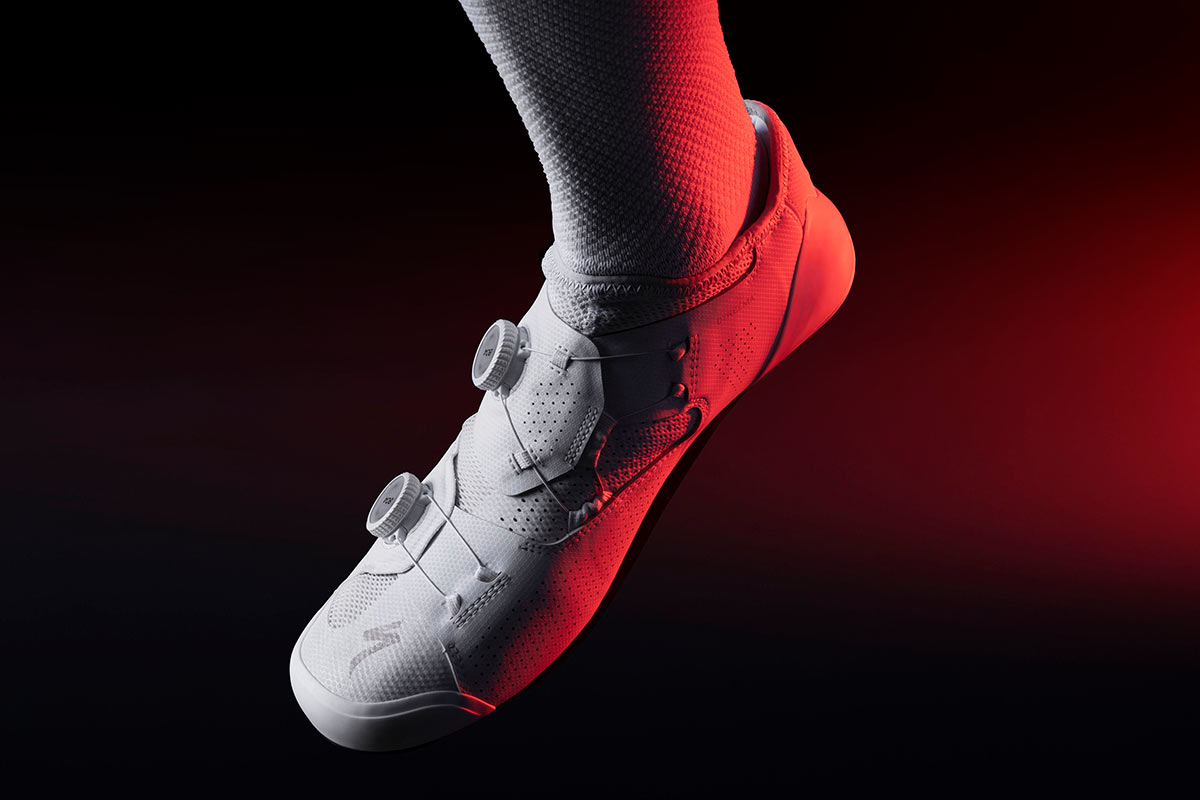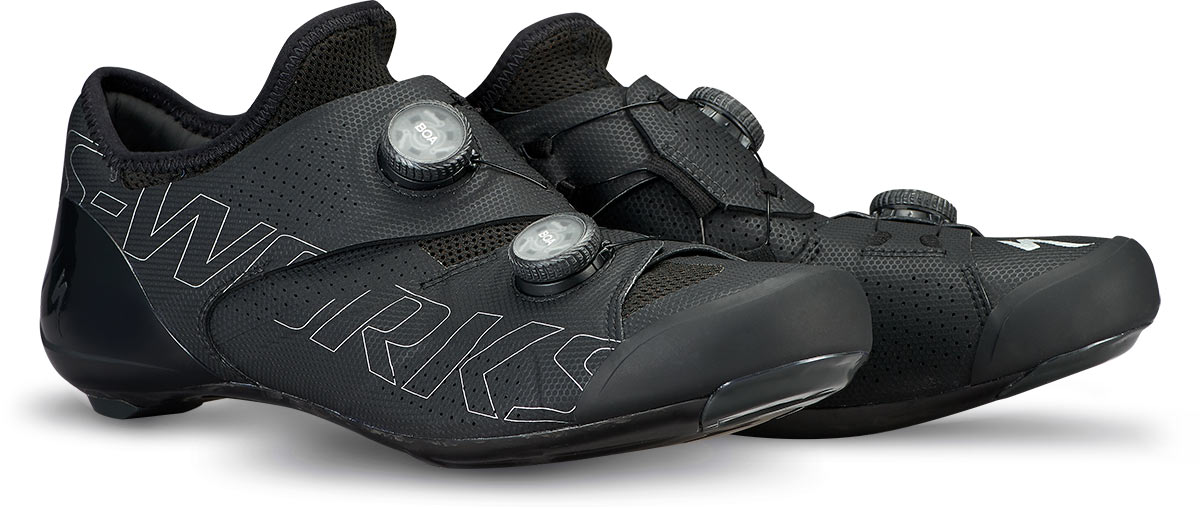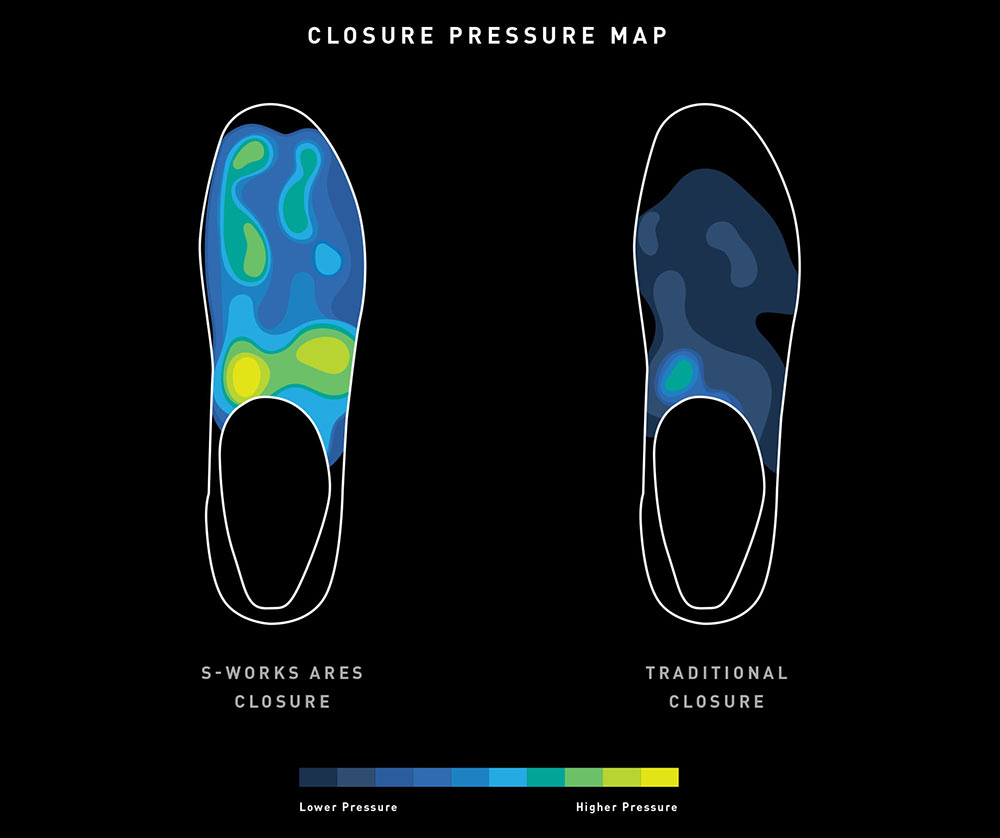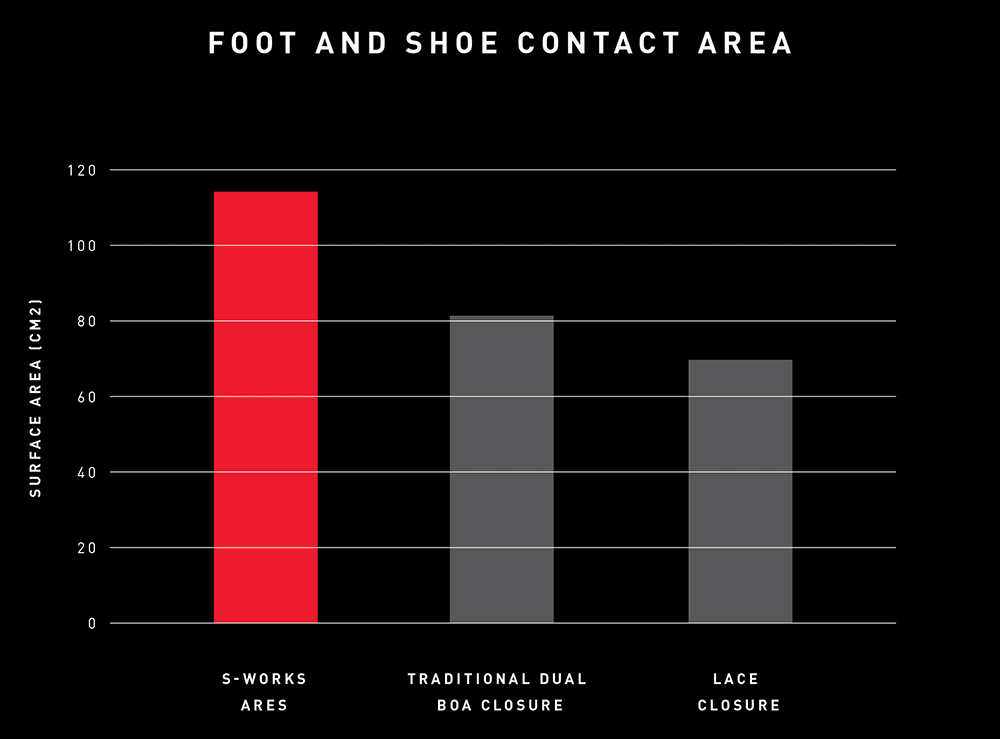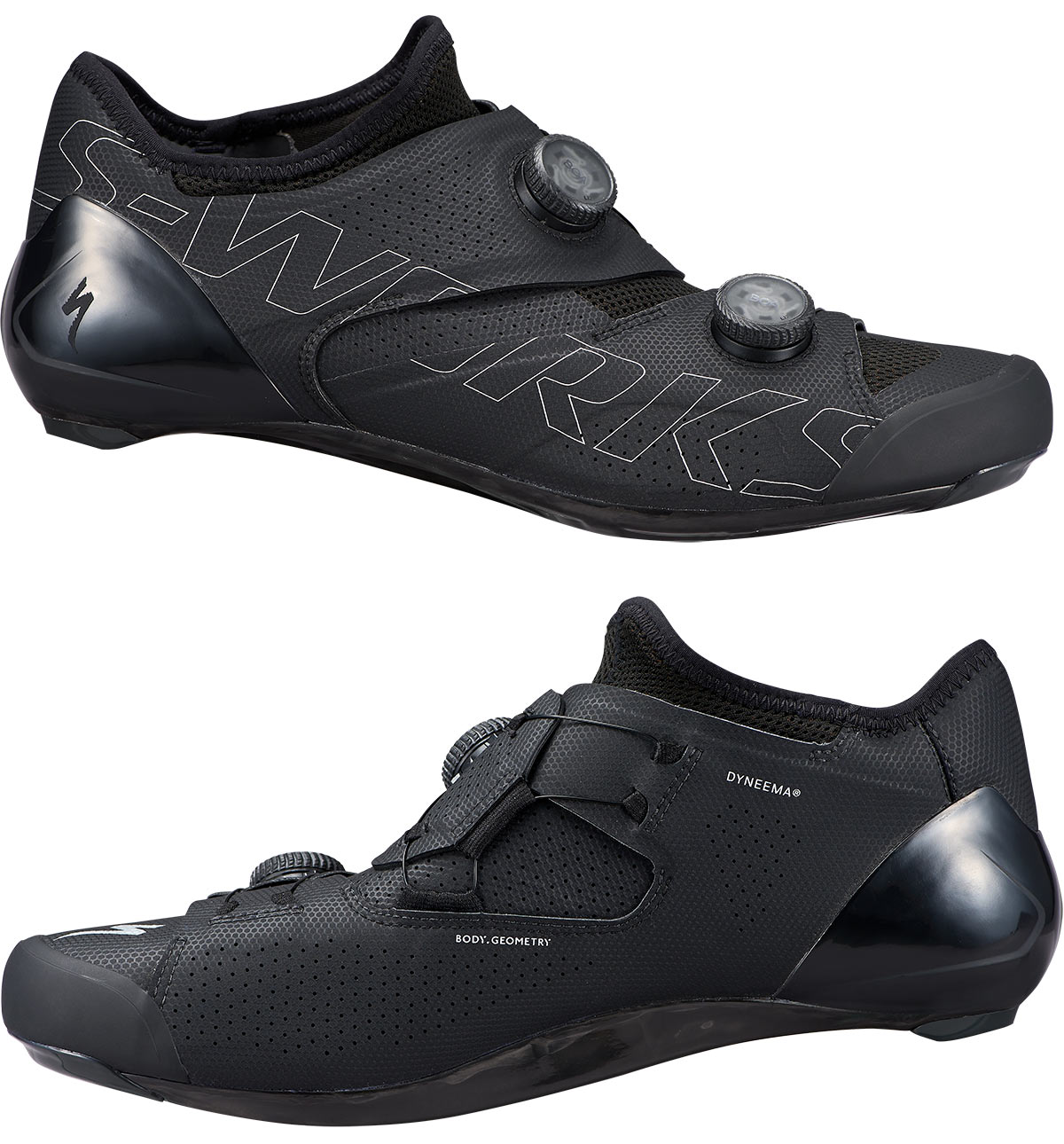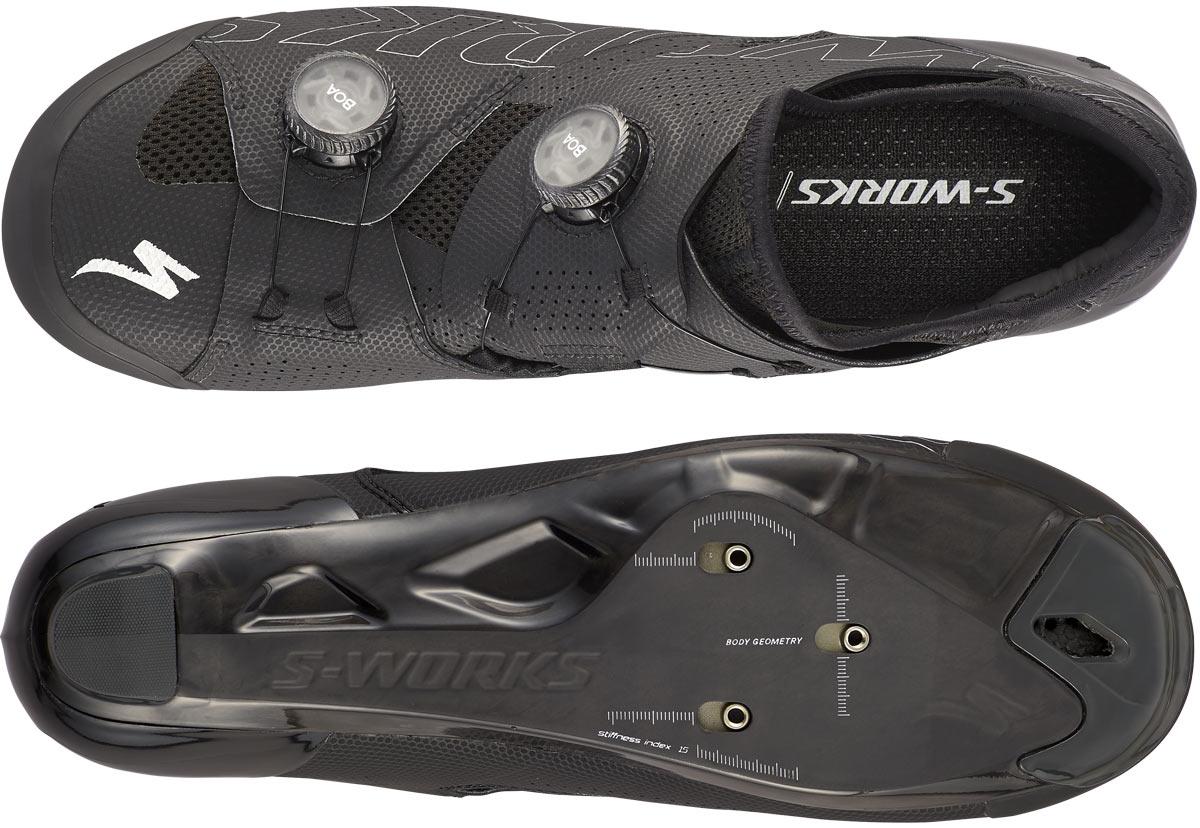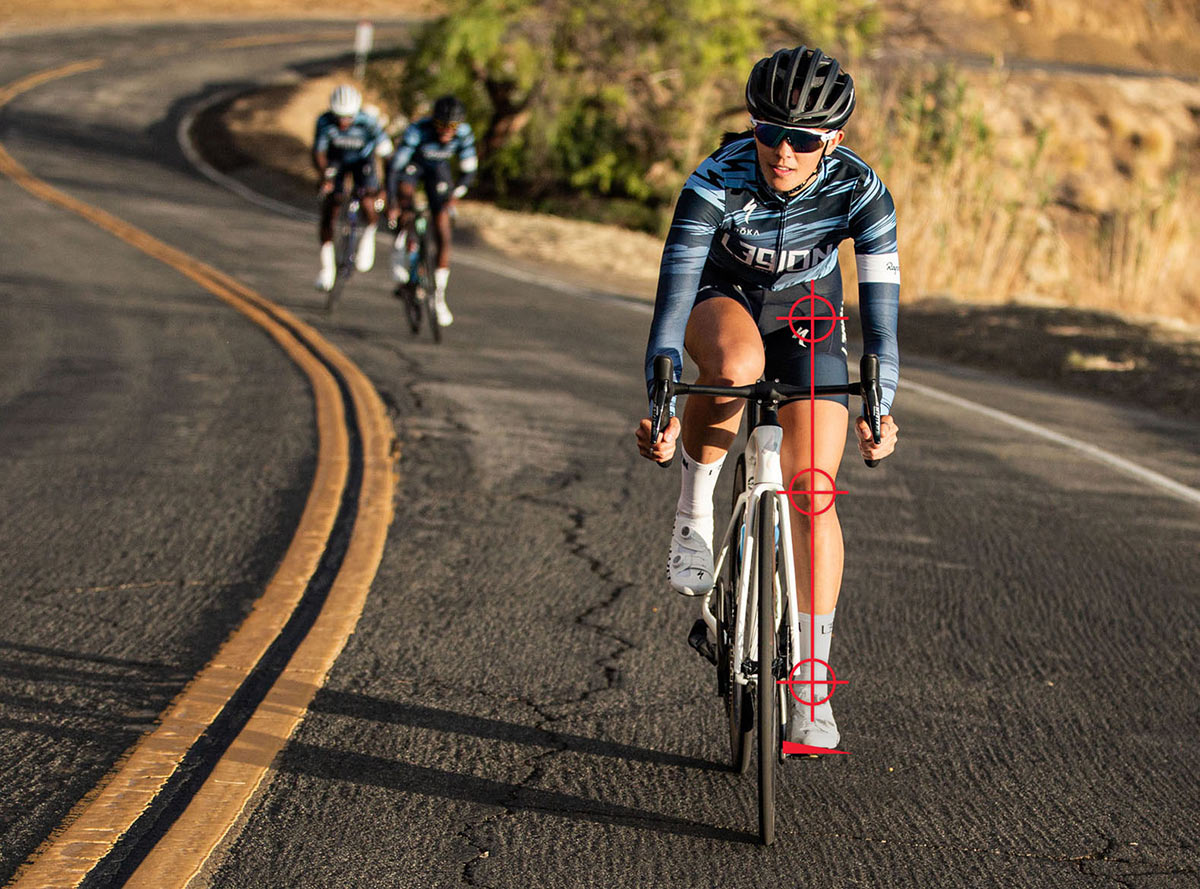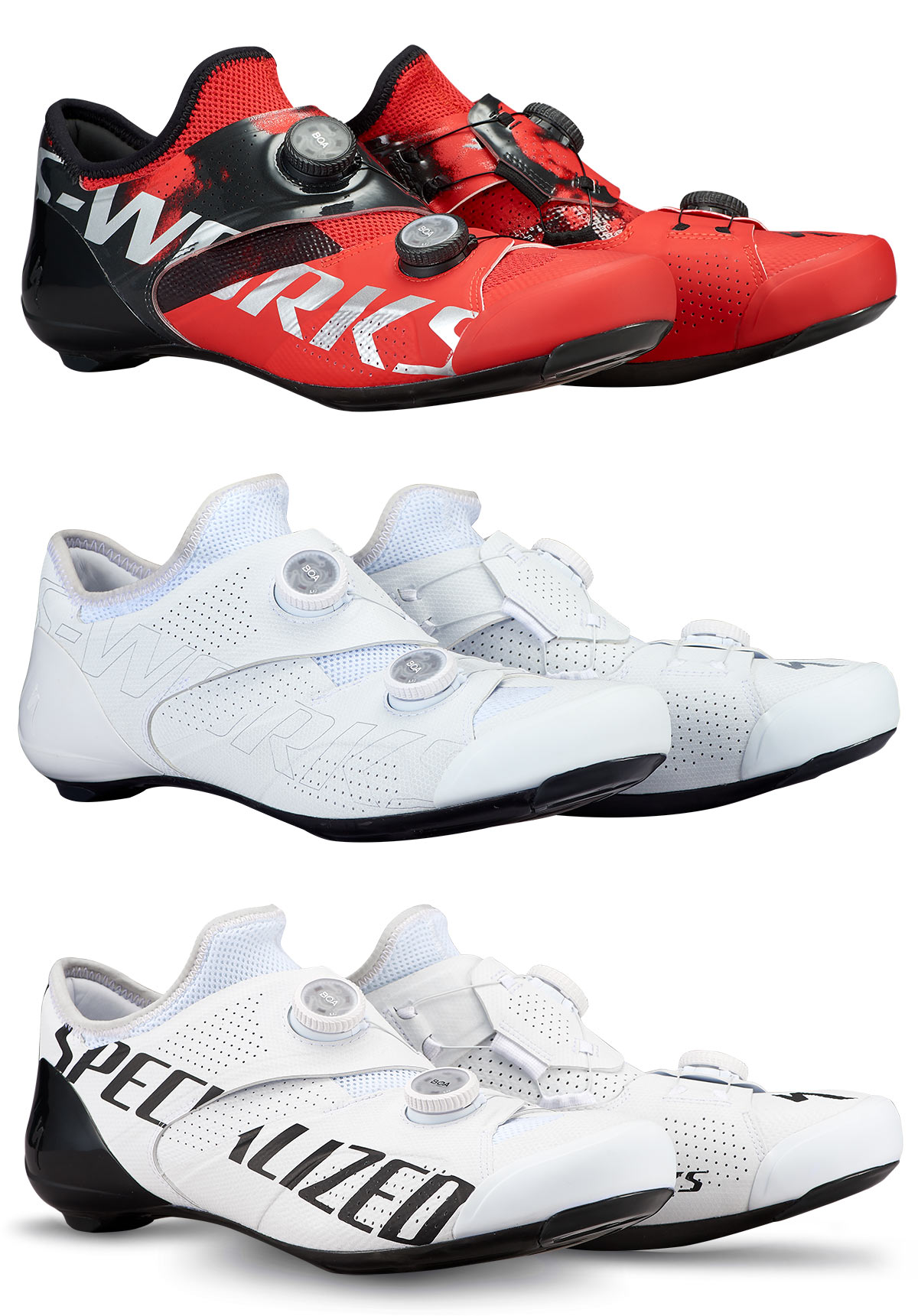The new Specialized S-Works Ares road bike shoes are an evolution of more than a decade of shoe designs. The goal? Make the most comfortable high performance road cycling shoes ever. How? By minimizing pressure points on the top of the shoe without giving up their secure hold on your foot.
The result is the Ares, a shoe that builds on the lowers and insoles from prior models but introduces an entirely new upper that cradles your foot and spreads the pressure evenly across the top. It’s respectably light, too. Here’s how they got there…
How the Ares was developed
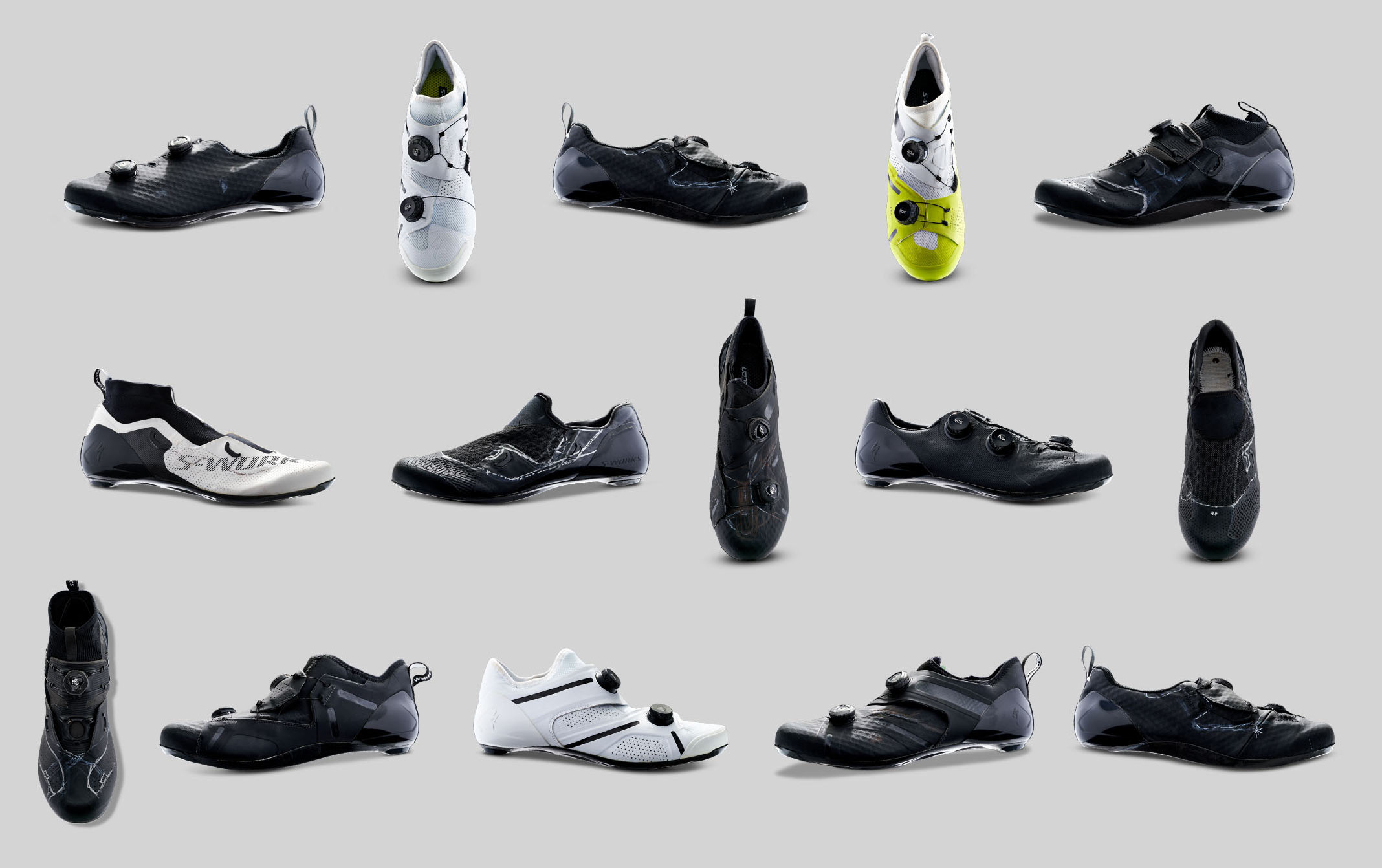
If we step back in time (pun intended), it becomes clear how Specialized end up looking at the top of the foot. They started with their Body Geometry insoles, which add varying levels of arch support to keep the foot from collapsing as you drive the pedals downward. A metatarsal button in the middle/front helps spread your metatarsal and phalange bones, giving the nerves between them a bit of room to breathe.
In 2012, they redesigned their carbon soles to make them stiffer, lighter and thinner. They also used that opportunity to create a bit more medial support to handle the pressure that the inside of your foot puts on the sole.
Since then, they’ve made them lighter, cooler and more ventilated, and then lighter still, ending up with a 99g Exos S-Works shoe that still reigns supreme as the lightest cycling shoe on the market.
Still, despite messing around with different BOA dial and shoe lace placements and designs, they weren’t quite satisfied with how the upper wrapped around your foot.
Specialized has worked with some powerful athletes over the years, Mark Cavendish perhaps the best known in terms of pure wattage and sprinting output.
But it was Deceuninck – Quick-Step’s Sam Bennett that led the development of the Ares, testing prototype after prototype. Because it turns out it’s not just a stiff carbon sole that wins all-out finish line sprints. It’s the ability to also pull up against the shoe without it stretching or allowing your foot to move. That’s why we see riders reaching down to tighten their shoes before they get into the final stretch.
But, shoes need to be comfortable for the hours of riding that lead up to a last minute push, too.
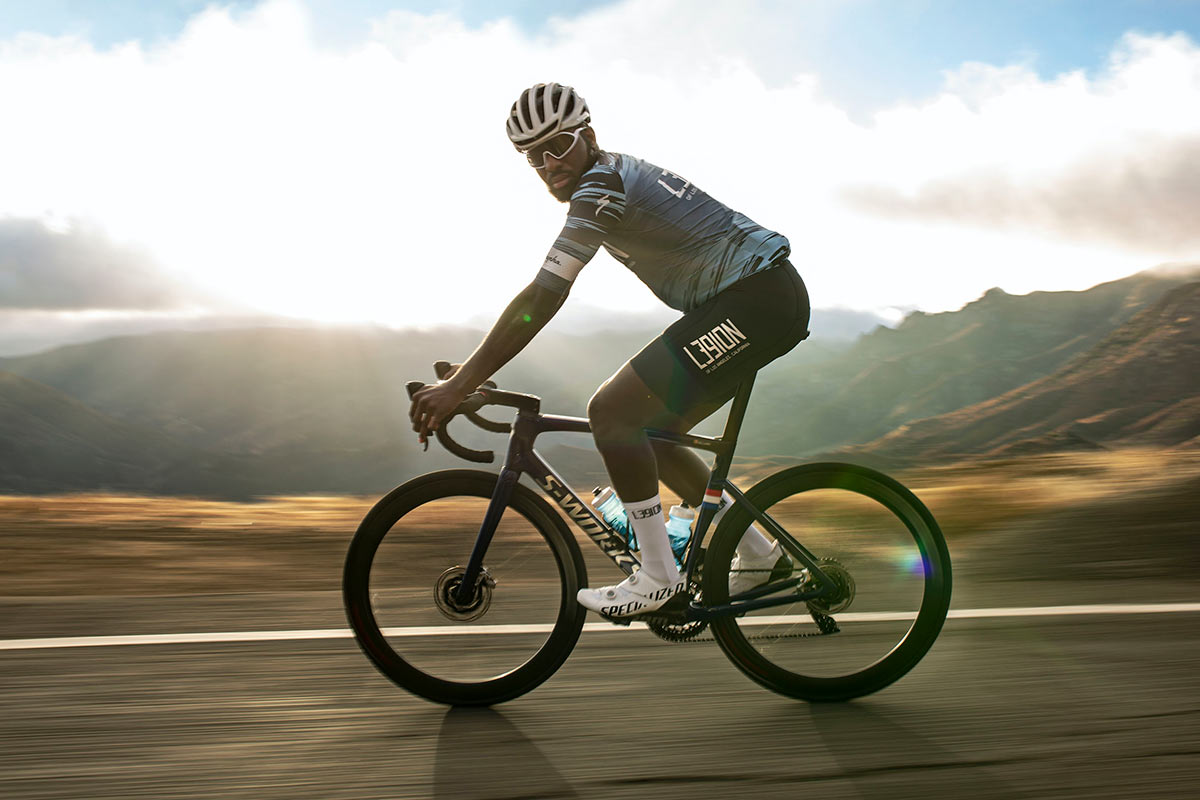
From Specialized:
Turns out that a meticulous data fan like Bennett was the perfect development partner. “Sam was amazingly focused on giving feedback,” says Cook. “At our first meeting, I was expecting to spend 30 min with him. We spent an hour and half, just talking about sprinting, and shoes, and his thoughts on them. The information he shared was just incredible.”
It was Bennett’s input about the balance between a secure fit and race-long comfort that helped spur the team to jettison old thinking and approach the shoe from a new perspective.
“We started from scratch, not thinking about the closures, and focusing on what the rider wants to feel against their foot,” says Cook. Those explorations led them to an entirely new upper design, eliminating the traditional tongue in favor of a Dyneema®-reinforced sock liner, combined with a repositioned closure that was game-changing.
And here’s how they did it…
Specialized Ares road shoes tech features & benefits
Three main features separate the Ares from the rest of Specialized’s cycling shoes:
- repositioned lower BOA dial, sits lower on the foot
- broader cover flaps between BOA cables and foot
- Dyneema sock wrapping all around the upper foot
The lightweight synthetic upper wraps from the side, then up and over the top of the foot with a broad section that spreads the pressure from the dial and cables more evenly. On the instep, the cables use a triangular pattern to pull against a broader section there, too.
The lower dial uses a flap over a flap design to allow it to disperse pressure lower, too. The gap between them supposedly reduces unnecessary pressure on the middle of the foot.
Compared to their standard dual-BOA closure shoes, the Ares has a 20% increase in contact surface area. That lets you ratchet down the dials for a more secure fit without creating hot spots.
It’s not just surface area, though, it’s also the combination of materials and components. BOA’s Li2 dials let you loosen and tighten in single click increments to get the fit just right.
Underneath the flaps is a soft, sock-like liner that wraps around most of your foot. Except, it’s not all stretchy…there are Dyneema fibers running through specific sections that prevent stretch so that it won’t loosen when you’re pull hard on the upstroke.
The PadLock heel cup cradles the rear of your foot to prevent slippage, too.
The FACT Powerline carbon outsole is their stiffest version (Stiffness Level 15.0). It uses reversible titanium cleat nuts that expand the adjustment range if you like mounting your cleat further back.
Lastly (another pun…get it?), the shape and angles of the insole and outsole help provide proper knee alignment. You’ll be more comfortable, and be able to drive the pedals downward with more force, too. The overall result?
They’ll make you 1% Faster
A bold claim, and one that may sound trivial, but do the math and it would usually mean winning a race. Making the rider exactly 1% faster wasn’t the initial benchmark, but Specialized says that’s the end result of being more comfortable while also being able to eek out every last watt in a sprint.
Specialized Ares pricing & colors
The new Specialized S-Works Ares comes in Black, White, Team red and Team White. Sizes range from 36 through 49, with half sizes from 38.5 to 46.5. Claimed weight is 220g for size 42 (per shoe).
Other features include a replaceable heel tread, and a roomy toe box with bumper cover. Retail price is $425 USD (£375 / €419.90). Read our full review to see why they work the the most non-intuitive way.
